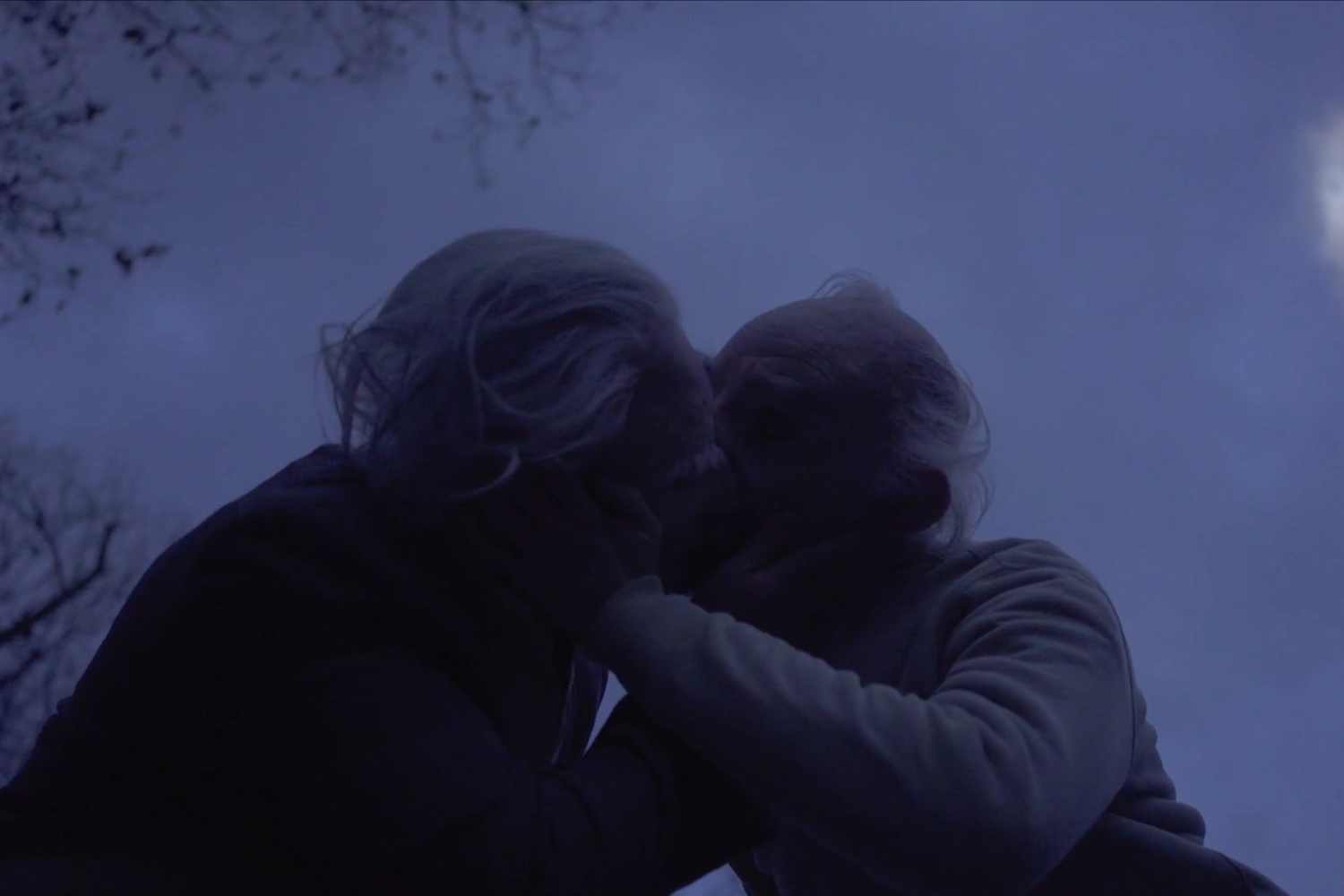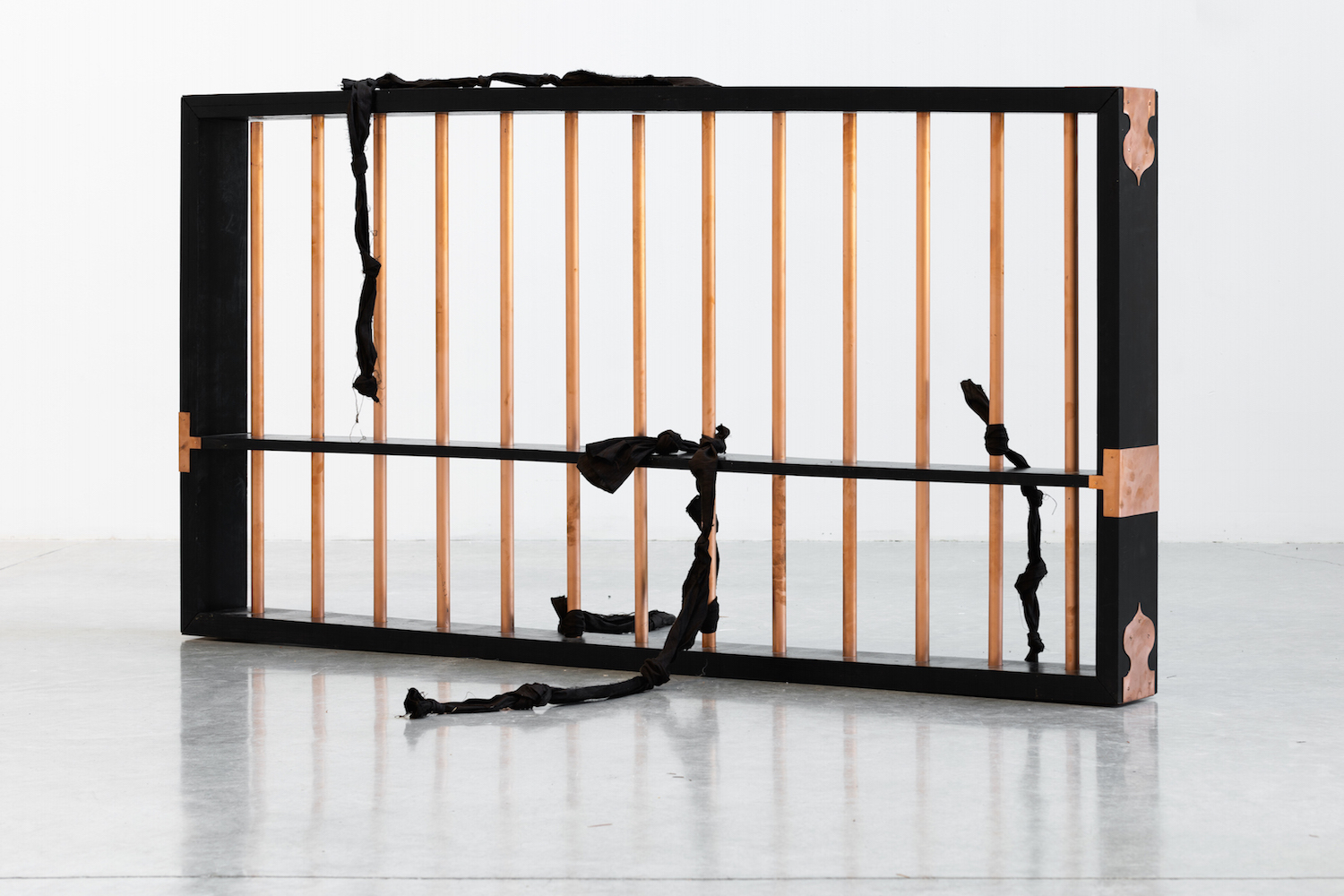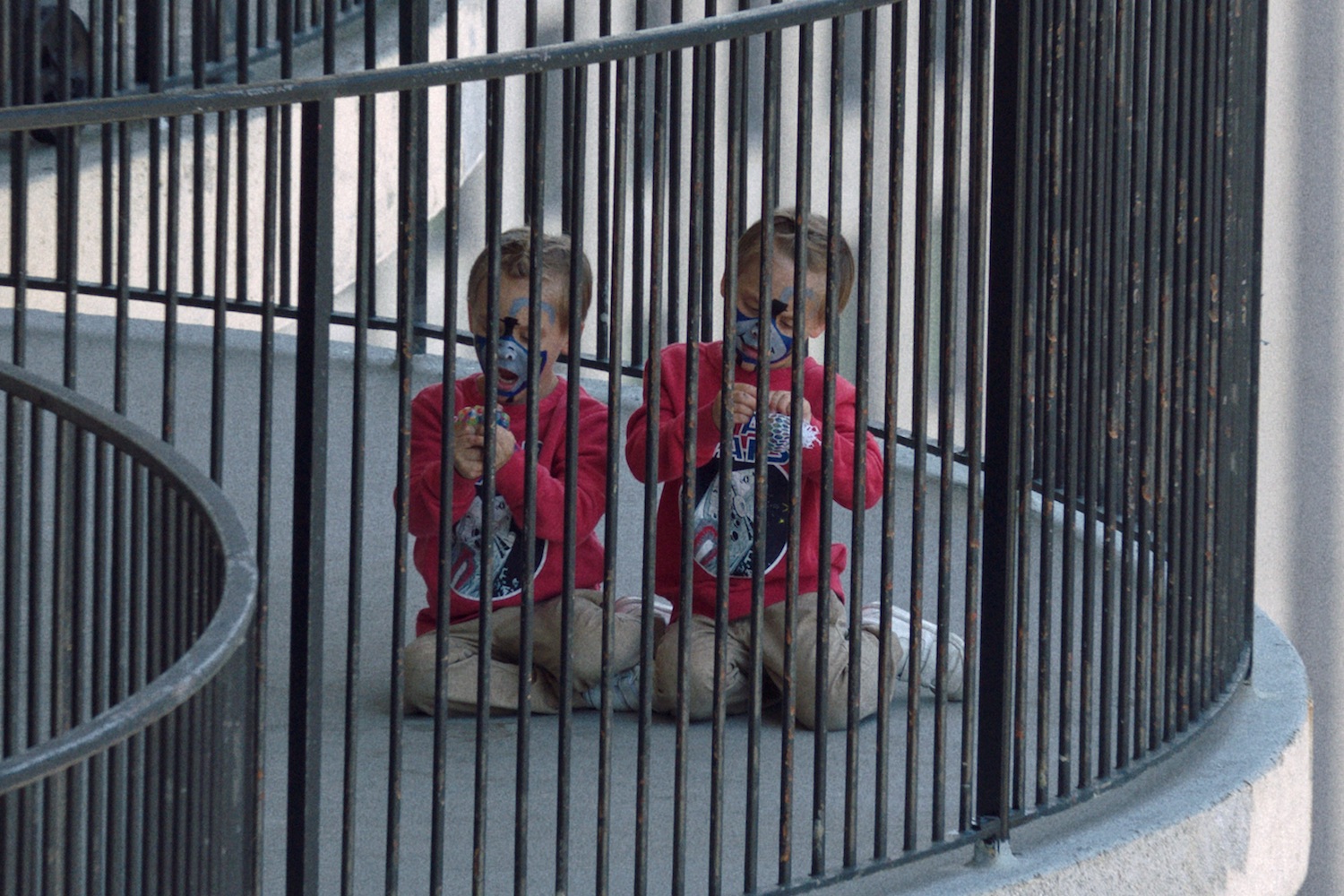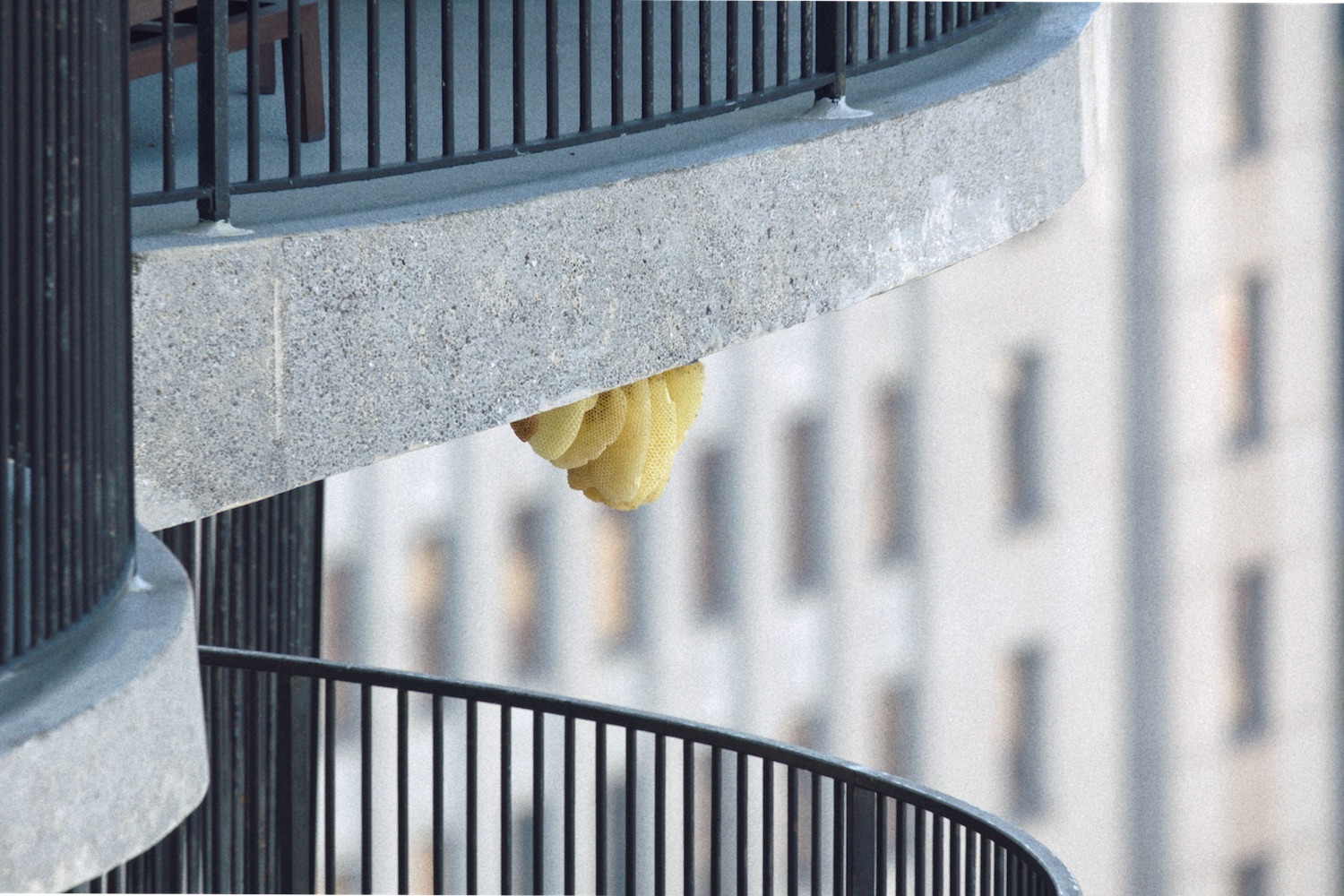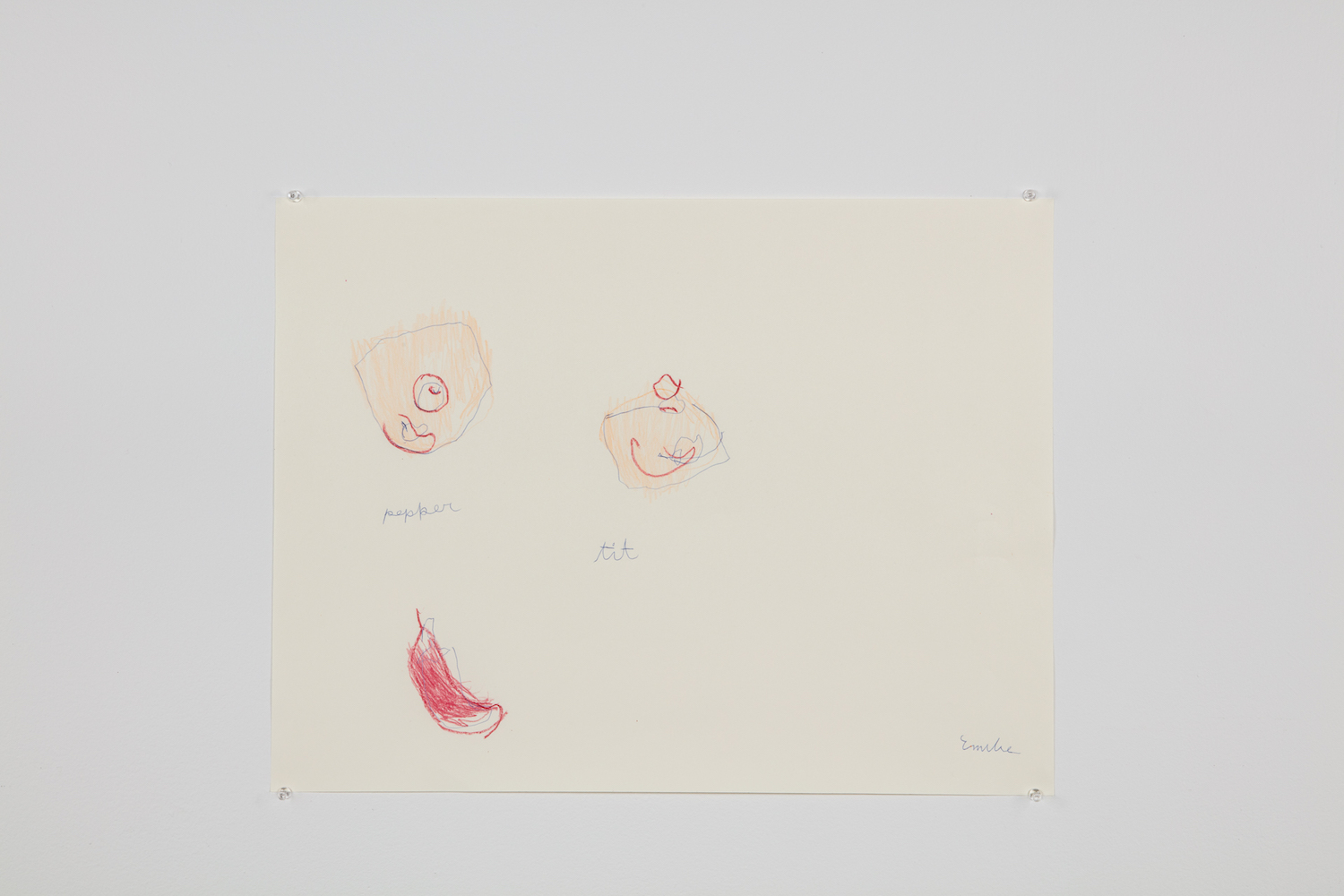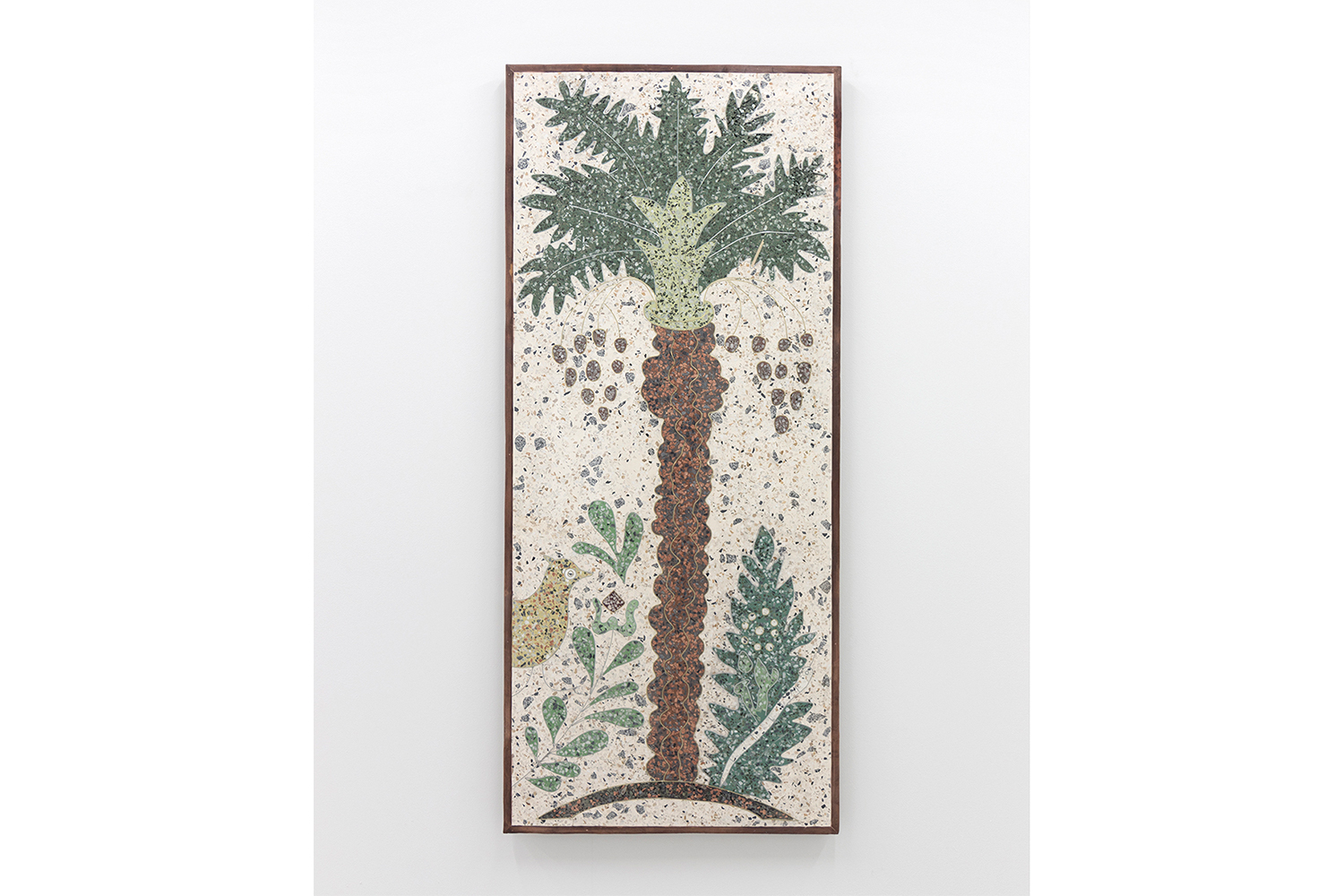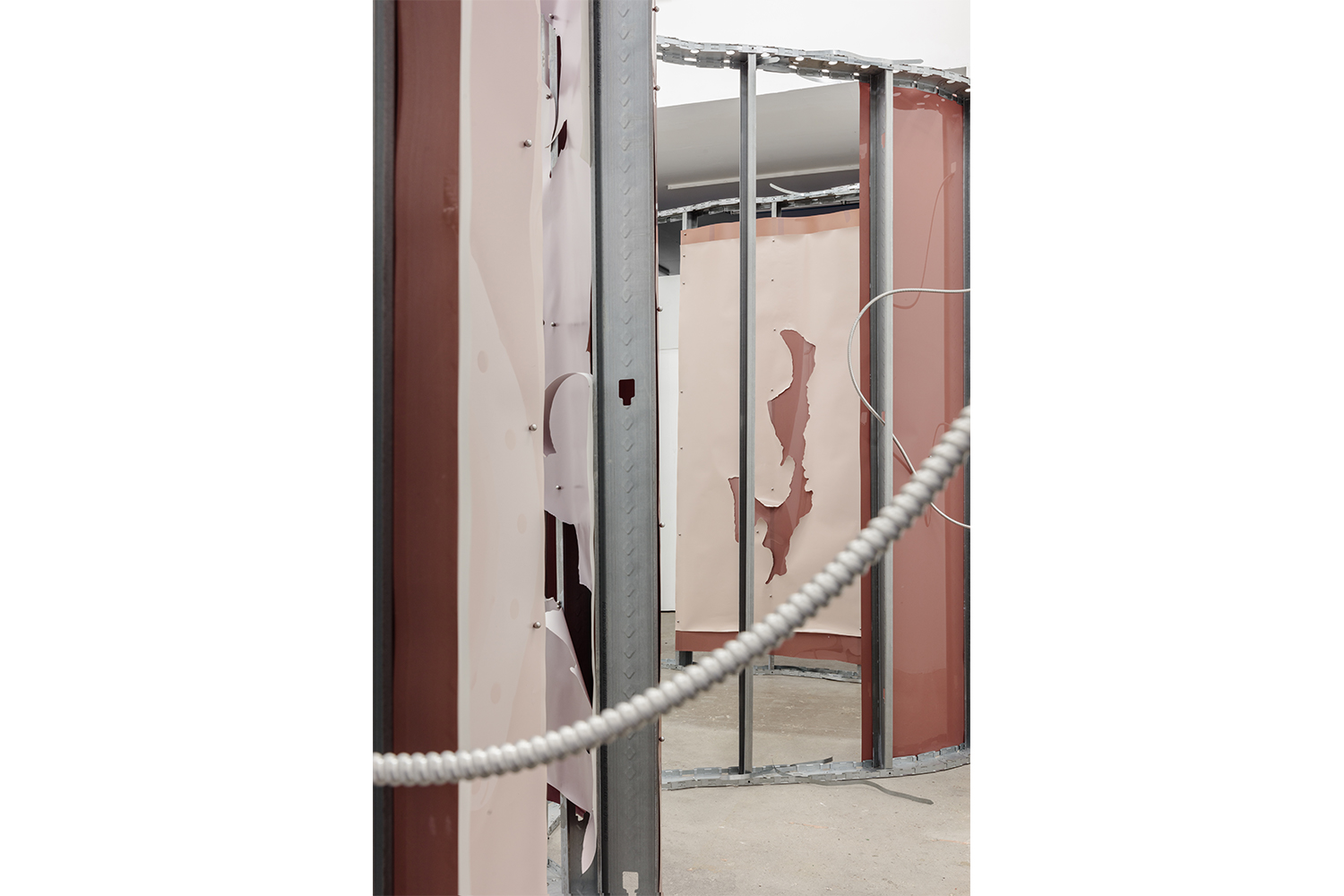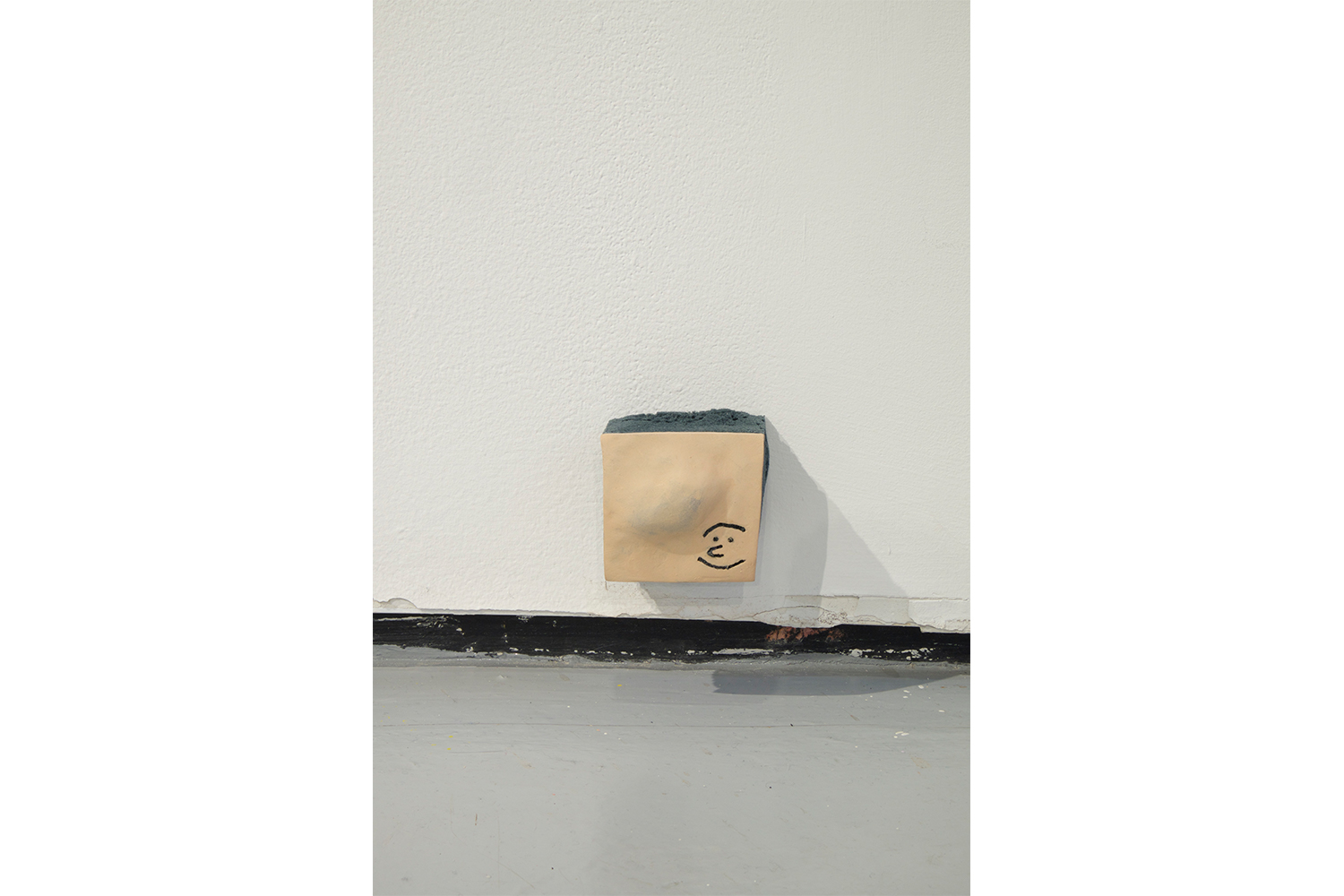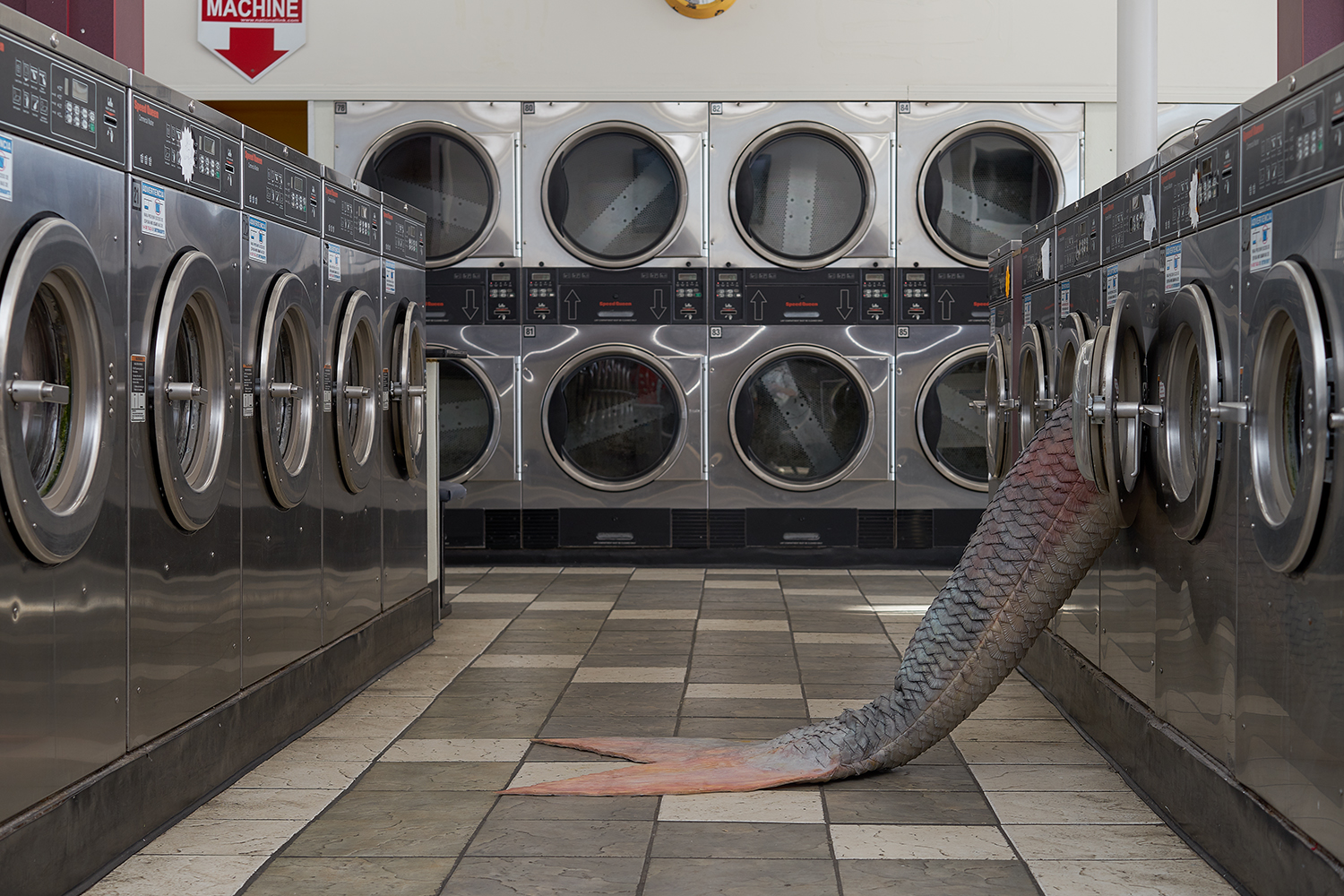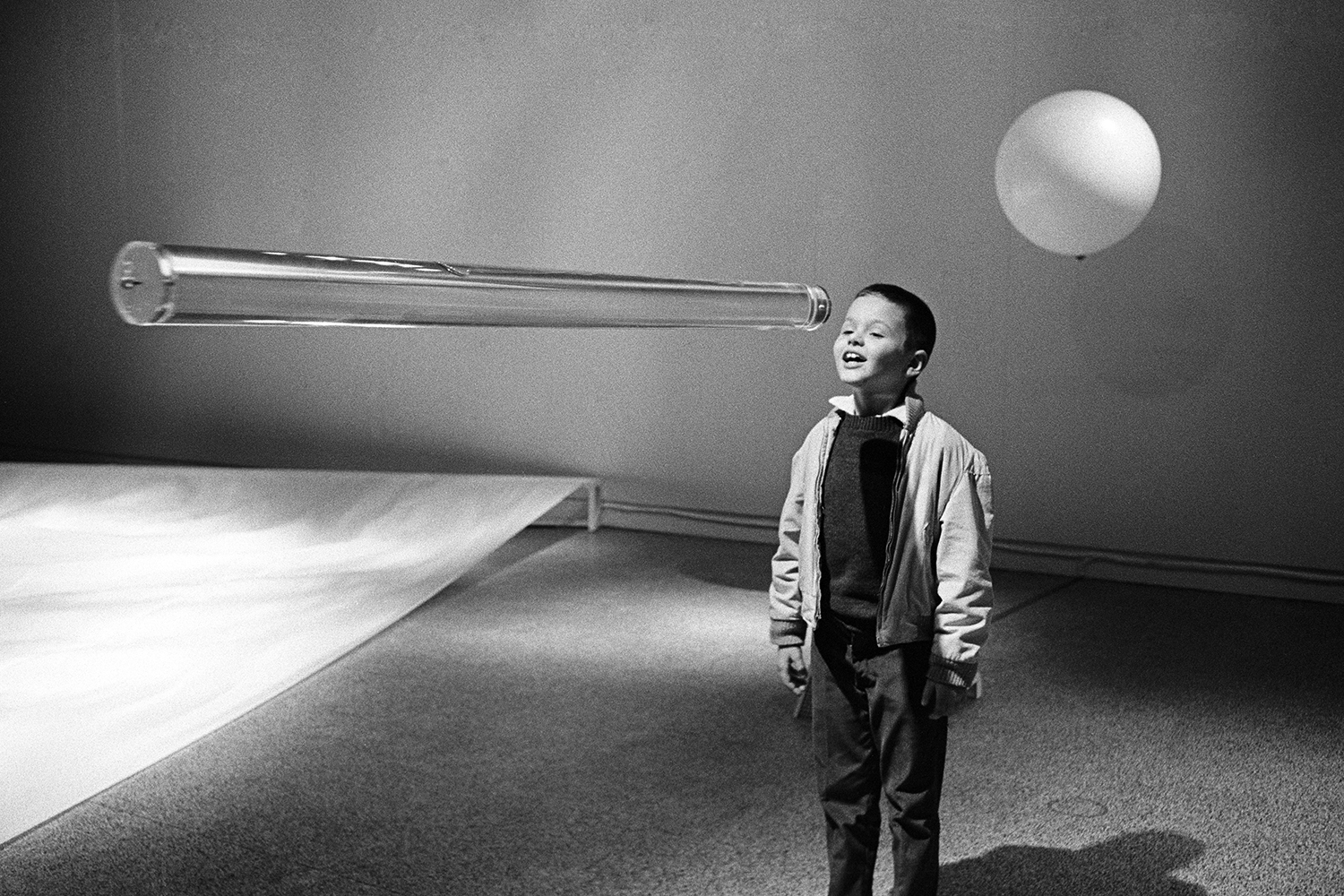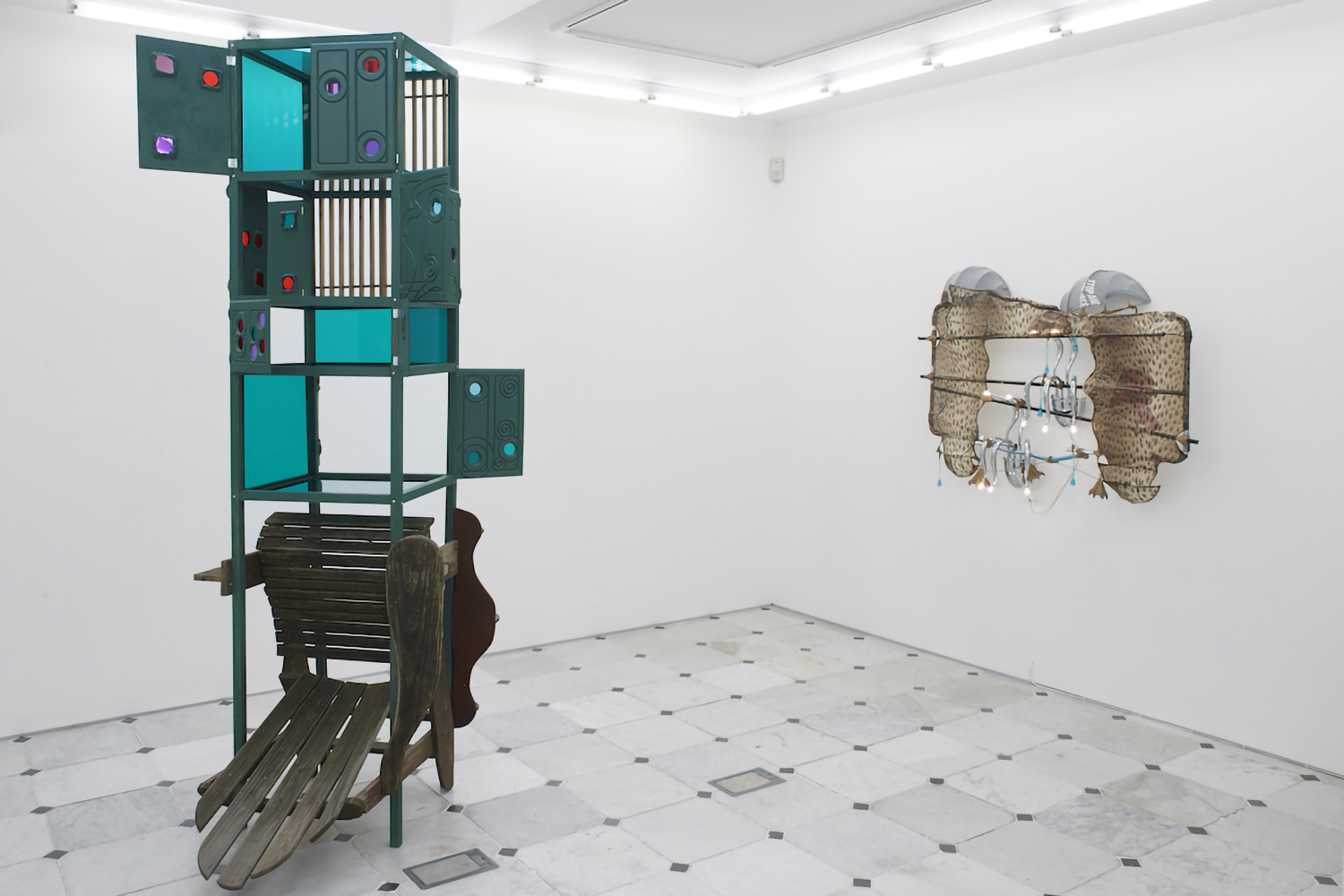What is at stake when doubt is our primary stance toward the world? “In Practice: Total Disbelief” at SculptureCenter stages a position of doubting the contemporary as ideals, norms, and truth-claims continue to be productively revised and perniciously defaced. The 2020 iteration of “In Practice,” an annual open call that facilitates new artistic production, “Total Disbelief” presents wide-ranging works that profess doubt as a simultaneous desire for and refusal of identification. Recalcitrant, skeptical, and courting illegibility, the exhibition’s artists invest their materials with forms and narratives that disobey as a precondition for knowing.
Several artworks draw on bodily knowledge to cast doubt on the legacy of patriarchal Enlightenment values that excise what our nonconforming bodies understand. In Laurie Kang’s Hull (2019–20), photographs of the artist’s grandmother’s garden and photo paper exposed to the contingencies of atmosphere and light are folded into flesh-toned silicone rolls, forging matrilineal intimacies across ecologies that emerge from and return to bodily inheritances. To construct E.L.G. Family Archives (2019), Emilie Louise Gossiaux inscribed ceramic body parts with the tattoos shared by the artist and her family, blurring the boundary between anonymity and identifying markings and doing so through the recall of memory many years after the artist became blind.
Videos by Andrew Norman Wilson, Jordan Strafer, Qais Assali, and Jesse Chun merge documentary formats with parafictional narratives through audiovisual montages that enact skepticism and ironic distancing. The recursive courtroom testimony of the washed-up doll protagonist in Jordan Strafer’s PEP (Process Entanglement Procedure) (2019) confounds the melodramatic scripts of victimhood through which performances are evaluated and credibility is juridically determined. In these videos, the fragile division between knowledge and doubt is the result of bureaucratic authority — sometimes humorous, though likely threatening.
A highlight is Hadi Fallahpisheh’s blind spot, an imaginative installation of photographic drawings and sculptures that perform graphic reduction to the garish simplicity of stereotypes. Sand Monkey (2019), a stack of sand-covered urns that dons a monkey mask and has a broom and mop for arms, restages and parodies the psychological and cultural mechanisms that project racialized associations and classed assumptions. Fallahpisheh’s title, which suggests being at once within and outside of the enclosures of visibility, stands in for the freedoms and dangers that doubt holds in tension throughout “Total Disbelief.” Yet the exhibition’s claims of doubt reveal another blind spot: amid our age of doubt, what is left for us to believe in?

